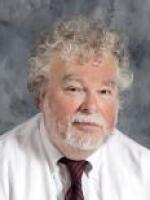Some time in the early spring, yet another planning effort on what to do about the Scajaquada Expressway (Route 33) is slated to come up with three draft proposals.
This is actually a much more elaborate effort than in the past. It meshes the Scajaquada (Route 198), the Kensington Expressway (Route 33), the interchange connecting the two, all of the neighborhoods along the two roads and the flanking city streets.
It's a concept called called Region Central. The Greater Buffalo Niagara Regional Transportation Council came up with the idea because of the potential impact changes to the 198 and 33 could have on adjacent neighborhoods — in total, around one-third of Buffalo's population.

In a meeting sponsored by the GBNRTC Thursday evening to talk about what's going on with the area, Planner Ralph DeNisco explained the choices needed to be made.
"We will develop three complete scenarios, because that's what our scope says. They are meant to be different. They are not meant to be exactly what would happen. They are meant to test different versions of how you might approach what happens on the Scajaquada Corridor and in Region Central, writ large," DeNisco said.
There are also housing and parks issues that have to be dealt with in improving the neighborhoods. However, Planner David Dixon said there are also economic and job training issues involved.
"It is inclusive economic development that is linked to training," Dixon said, "so that we bring the kinds of jobs that benefit those who need jobs and the training that gives them access to those jobs that are essential steps to realizing the full potential of making these jobs more accessible, and I want to say the city is fully supportive of this perspective."
"We're running towards the conclusion, right now," said state Sen. Sean Ryan (D-Buffalo). "Remember that almost 18-year process that the DOT had undertaken. That data is still there. The environmental impact statement, NEPA, all from those projects. We're just going to expand those and carry on. We're not starting from scratch."
Bill Wachob told the meeting, keeping the road wouldn't be allowed in Amherst.
"If you took any major road, say into the heart of Amherst or West Amherst or any community, it's going to be more convenient for people that are driving through the community and, to some degree, maybe for people that have access to that, that are close by that, but it's also going to destroy the community," Wachob said.
Whatever is eventually decided, Ryan said there is plenty of money, including $140 million set aside for the 198 alone.
"When we started this initiative, there probably wasn't enough money to complete it. But now, with the addition of the federal stimulus money, we have a chance to really fix the the very long-standing highway projects in the City of Buffalo," he said.


